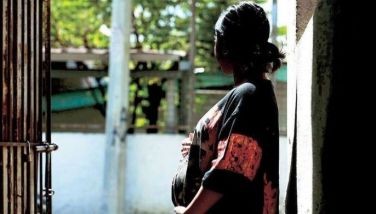YEARENDER: DOST rolls out modernization programs
MANILA, Philippines - Its attached agencies on weather forecasting and volcanology and seismology may have hogged the headlines last year, but the Department of Science and Technology (DOST) has not been idle.
Science Secretary Mario Montejo said DOST’s other institutions have also delivered on goals to roll out programs and projects that have contributed to the Aquino government’s efforts at enhancing the competitiveness of Philippine agriculture and industry, especially in preparation for ASEAN economic integration in 2015.
“The DOST has worked on so many things this 2013. It’s not just the weather forecasting and the disaster risk monitoring with PAGASA (Philippine Atmospheric, Geophysical and Astronomical Services Administration) and Phivolcs (Philippine Institute of Volcanology and Seismology),†Montejo said.
Away from the limelight, the DOST has come up with exciting programs, innovations and inventions in the fields of semiconductor and electronics, information technology, train system, agriculture, mining and weather monitoring in 2013 which may be rolled out with a bang in 2014.
Semiconductor
and electronics
The DOST opened the country’s first advanced device and materials testing facility inside the agency’s compound in Bicutan, Taguig to help the local semiconductor and electronics industry grow further.
Montejo said the operation of the high-tech Advanced Device and Materials Testing Laboratory (ADMATEL) was attaining its vision of encouraging semiconductor companies to locate their other operations here, such as product testing and design, not just assembly.
“Some are already seeing the benefits of doing their product testing and design here,†Montejo said, adding that product testing and design is about 40 percent of the manufacturing process.
Presently, Montejo said local semiconductor companies were merely doing their assembly in the Philippines, but assembly is just eight to 10 percent of the manufacturing process.
On the other hand, the DOST noted that the local semiconductor and electronics industry is already credited for generating billions of dollars in revenues every year. In 2010 alone, the industry was said to have generated $31 billion.
However, the continued growth of the local semiconductor and electronics industry has been impeded by weak research and development capabilities, with the absence of laboratories and testing facilities in the Philippines, particularly the lack of failure analysis (FA) and advanced materials characterization (AMC).
Big semiconductor companies have to send their samples to their mother companies abroad for FA and AMC testing. Smaller companies, it was learned, send their samples to Singapore and Malaysia for testing for a fee.
Development in IT
The DOST has also embarked on a project to help the information technology-business processing management (IT-BPM) industry – the country’s number one revenue-earning industry – to grow further through an effort to develop more skilled workers qualified for employment in call centers.
It distributed Learning English Application for Pinoys (LEAP) program to 10 universities and colleges for free to help college students develop their skills in the English language.
The course is designed to attain a level of proficiency in English that is acceptable to local call centers. The program is a 200-hour English training software that has modules on grammar and vocabulary, and on speech.
The LEAP program was developed by a team of software engineers and designers and language experts in the University of the Philippines-Diliman College of Engineering and College of Arts and Letters.
The DOST gave the UP Diliman team P13 million to develop the program.
Train systems
The DOST also exerted effort to help solve the metropolis’ worsening traffic woes by developing efficient public transport systems such as the Automated Guideway Transit (AGT) system inside UP Diliman. President Aquino took a test ride on the train last April.
A flagship project of the DOST in collaboration with UP, the elevated AGT is emission-free and powered by electricity, similar to the Light Rail Transit system in Metro Manila and other elevated carriers abroad.
Currently, the DOST is constructing a pilot AGT line inside the agency’s compound in Bicutan.
Montejo said that some local government units like Quezon City and Baguio City have expressed interest in the AGT system being developed by the DOST.
The DOST is also working on an Electric Road Train (ERT), which is an innovation on the bus rapid transport system being used in other countries.
Agriculture, mining
In the field of agriculture, the DOST’s Philippine Council for Agriculture, Aquatic and Natural Resources Research and Development (PCAARRD) has been busy spearheading and funding research projects that will boost rice production; promote consumption of the much healthier brown rice, and develop high-yielding hybrid abaca, coconut, and other cash crops.
A PCAARRD-funded research project came up with a process that prolongs the shelf life of brown rice, which has already captured the interest of hybrid rice producer SL Agritech.
A PCAARRD-funded research project of the UP Los Baños’ Institute of Plant Breeding also developed a high-yielding and disease-resistant abaca hybrid, which was produced by crossbreeding the Philippines’ abaca with local indigenous wild banana plant called pacol.
Moreover, Montejo said the DOST developed a rice transplanter which lessens waste brought by manual planting of rice seedlings, helping rice farmers boost productivity.
The DOST was also at the forefront of the development of hand tractors to enable more efficient soil tilling.
In the mining industry, Montejo said the DOST quietly had a breakthrough on a project to develop a gold processing machine that would help gold miners boost gold production without using cyanide or mercury.
Weather forecasting
In weather forecasting, the DOST’s Project NOAH (Nationwide Operational Assessment of Hazards) – pursued under the Philippine Council for Industry, Energy and Emerging Technology Research and Development – has been successful, with the project’s website becoming widely used by the public in monitoring weather and planning out disaster risk reduction and preparedness activities.
A major component of Project NOAH, the Disaster Risk and Exposure Assessment for Mitigation (DREAM) program also received a P2.4-billion funding from the national government, ensuring the program‘s phase two expansion through 2016.
The project was originally funded for two years starting from its launch in 2012.
The DREAM program is expected to come up with a comprehensive and integrated flood early warning system covering the entire country by 2016.
So far, the DREAM program has finished scanning 17 of the targeted 18 critical river basins in the country through the Light Detection and Ranging (LIDAR) system, a technology that can generate high-resolution, up-to-date and three-dimensional flood hazard maps.
The DREAM has already produced LIDAR-based flood models for Iponan, Mandulog, Iligan, Pampanga, Davao Oriental, Marikina, Cagayan de Oro and Compostela Valley.
The rest of the flood models are to be completed in June 2014 when the first phase of the program is set to end.
Data gathered under the DREAM is also included in the Project NOAH website.
The DREAM entailed the procurement of two aircraft to carry LIDAR instruments for the aerial inspections of the river basins.
The second phase of DREAM aims to double the number of equipment being used to be more efficient in data gathering.
The second phase of DREAM also tapped the help of about 50 state universities and colleges offering geodetic engineering and computer science courses to address the manpower requirements of the program.
- Latest
- Trending































